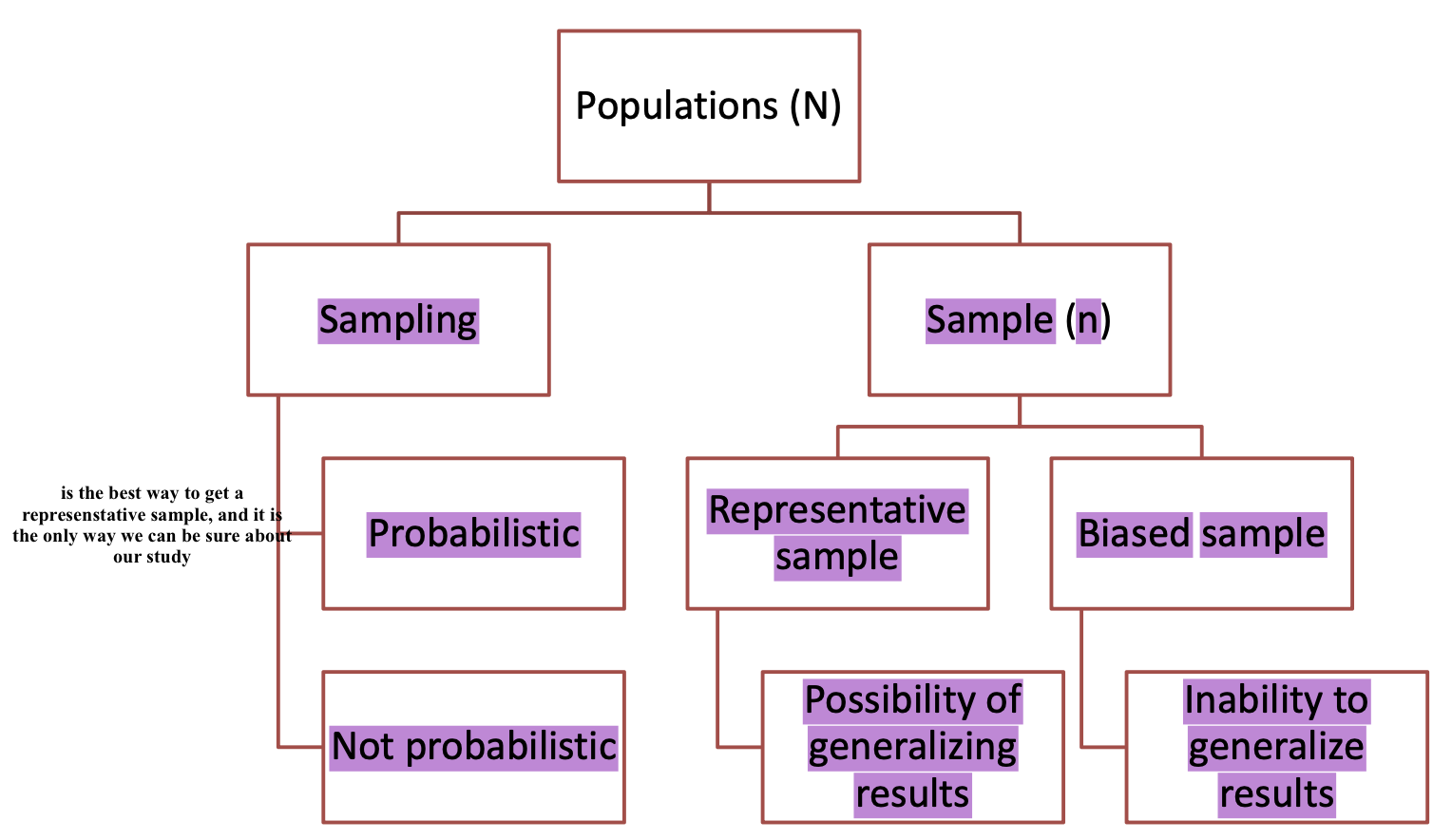Sampling distributions and difference in means
1/27
Earn XP
Description and Tags
Inferential statistics: sample and population
Name | Mastery | Learn | Test | Matching | Spaced |
|---|
No study sessions yet.
28 Terms
Sampling
Procedure for drawing the sample.
In order to be able to generalise the results of the sample to the population, the sample has to be representative.
Representative sample
A subset of subjects who belong to a given population and who have the same general characteristics as the population.
Otherwise, we have a biased sample.
Bias
Systematic error in sampling caused by a restriction in the selection process resulting in unrepresentative samples.
these results are not valid for the study.
Example of bias
In order to assess performance in language, we only selected students who attended school in Valencian as part of the sample.
Probability sampling
The probability that each element of the population is likely to be part of the sample can be determined.
It is the best way of sampling because it is randomly selected.
Example of probability
List of all the inhabitants of a city to randomly select those who will be part of the polling stations in the elections.
Non-probability sampling
The probability associated with each of the possible samples is unknown or not taken into account.
It does not allow the degree of representativeness of a sample to be known.
Example of Non-probability sampling:
Doing a survey at the door of the University
Types of probabilistic sampling
Simple Random Sampling
Stratified Sampling
Cluster Sampling
Simple Random Sampling
Randomly select individuals from the entire population.
Example of Simple Random Sampling
If you're selecting 10 students randomly from a class of 100, every student has a 1/100 chance of being chosen.
Stratified Sampling
The population is divided into different groups or sub-populations based on a specific characteristic (like age, gender, or grade), and then you randomly sample from each group.
Example of Stratified Sampling
In a school with 60 male students and 40 female students, you might want to sample 10 students.
You would randomly pick 6 males and 4 females to make sure the sample mirrors the gender distribution.
Cluster Sampling
divide the population into clusters (which are groups or collectives, such as schools, hospitals, or neighborhoods), then you randomly select entire clusters.
All individuals within the chosen clusters become part of your sample.
Example of Cluster Sampling
If you want to survey students about their learning habits, and your population is spread across different schools, you might randomly select a few schools (clusters), and then survey all students in those selected schools.
Types of non-probabilistic sampling
Intentional or Opinion Sampling
Snowball Sampling
Accidental or Convenience Sampling
Intentional or Opinion Sampling
Researcher uses their judgment to select sample elements that they believe are representative of the population.
This is based on the researcher's experience or expertise about what samples would provide the most relevant information.
Example of Intentional or Opinion Sampling
If you're studying the impact of a new drug, you might intentionally select patients who have experienced specific side effects from the drug because their experiences are likely to provide valuable insights.
Snowball Sampling
technique often used when studying populations that are difficult to access or hidden (e.g., people in specific social groups, or individuals with rare conditions).
One participant refers or "recruits" other participants, creating a "snowball" effect as the sample grows.
Example of Snowball Sampling
If you're studying a specific subculture, like people who practice a rare hobby, you might start with one participant who knows others in the community, and those participants then refer you to more individuals.
Accidental or Convenience Sampling
when the researcher selects participants who are easiest to access, rather than trying to select a sample that is representative of the broader population.
Example of Accidental or Convenience Sampling
If you're conducting a survey in a shopping mall, you might simply ask the first 100 people who walk by, as they are the most accessible.
The sample is convenient, but it might not represent the whole population.
Population can be split into
Sampling
Sample (n)
Sampling can be split into
Probabilistic
Not probabilistic
Sample (n) can be split into
Representative sample
Biased sample
Representative sample can lead to
Possibility of generalizing the results
Biased sample can lead to
Inability to generalize results
overview
